

I am a Research Scientist at Google DeepMind, working on reasoning in LLMs. Recently, I have been working on Gemini Thinking models including Gemini 2.5 Pro. I also work on the image generation capabilities of Gemini. I am the Managing Editor for Transactions on Machine Learning Research (TMLR). I recently created TMLR Beyond PDF, a new, HTML-based submission format for TMLR, that supports interactive figures and videos, along with the usual LaTeX and images. I obtained my PhD in machine learning from the University of Toronto.
As a Canadian, I enjoy salmon, maple syrup, and their combination (salmon candy)! I also like sports based on water in different physical phases: swimming, skating, and skiing. As a music-lover, I support the Vancouver Symphony Orchestra and the Vancouver Opera. I myself play the saxophone and the guitar.

Abstract: The remarkable zero-shot capabilities of Large Language Models (LLMs) have propelled natural language processing from task-specific models to unified, generalist foundation models. This transformation emerged from simple primitives: large, generative models trained on web-scale data. Curiously, the same primitives apply to today's generative video models. Could video models be on a trajectory towards general-purpose vision understanding, much like LLMs developed general-purpose language understanding? We demonstrate that Veo 3 can zero-shot solve a broad variety of tasks it wasn't explicitly trained for: segmenting objects, detecting edges, editing images, understanding physical properties, recognizing object affordances, simulating tool use, and much more. These abilities to perceive, model, and manipulate the visual world enable early forms of visual reasoning like maze and symmetry solving. Veo 3's emergent zero-shot capabilities indicate that video models are on a path to becoming unified, generalist vision foundation models.
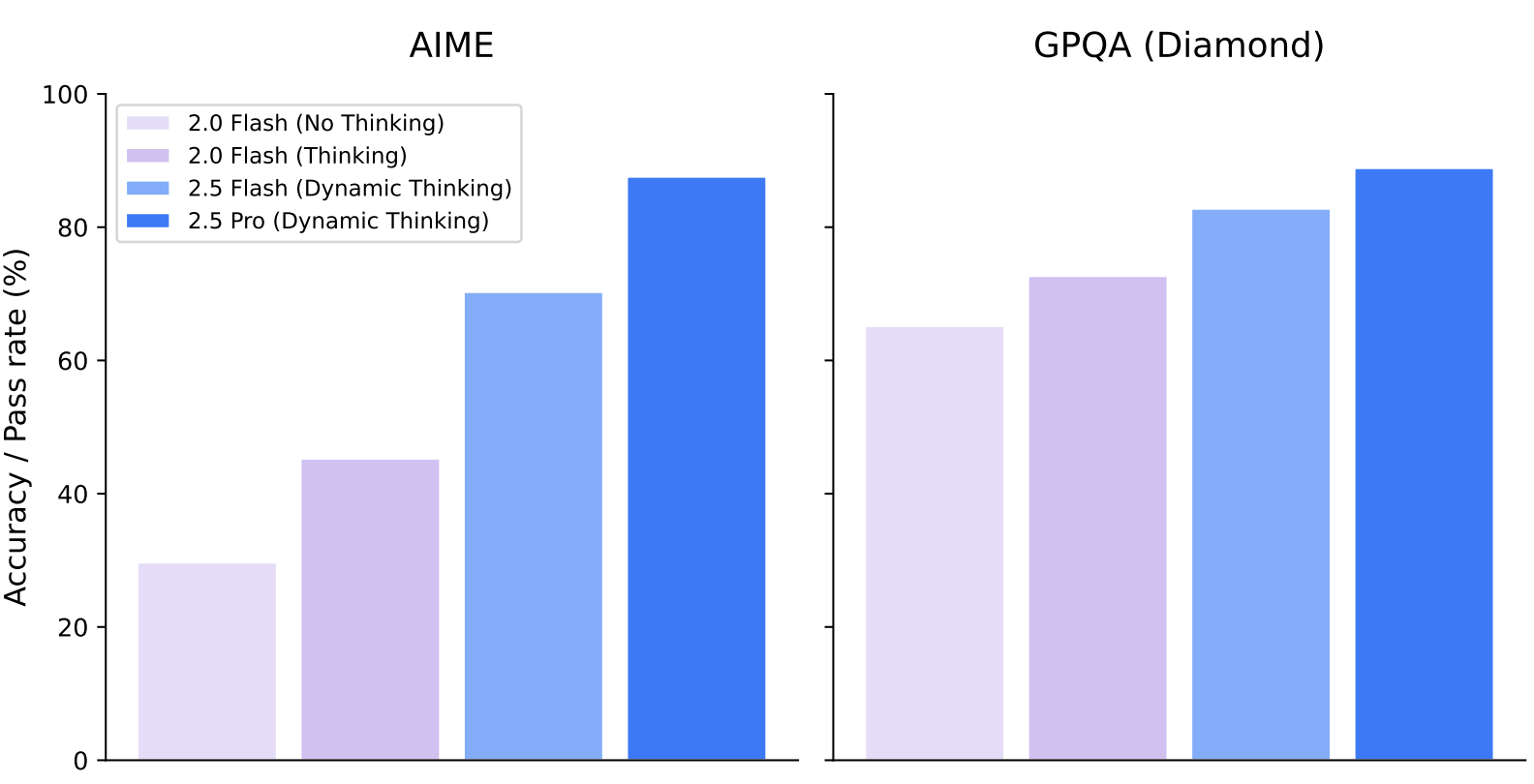
Abstract: In this report, we introduce the Gemini 2.X model family: Gemini 2.5 Pro and Gemini 2.5 Flash, as well as our earlier Gemini 2.0 Flash and Flash-Lite models. Gemini 2.5 Pro is our most capable model yet, achieving SoTA performance on frontier coding and reasoning benchmarks. In addition to its incredible coding and reasoning skills, Gemini 2.5 Pro is a thinking model that excels at multimodal understanding and it is now able to process up to 3 hours of video content. Its unique combination of long context, multimodal and reasoning capabilities can be combined to unlock new agentic workflows. Gemini 2.5 Flash provides excellent reasoning abilities at a fraction of the compute and latency requirements and Gemini 2.0 Flash and Flash-Lite provide high performance at low latency and cost. Taken together, the Gemini 2.X model generation spans the full Pareto frontier of model capability vs cost, allowing users to explore the boundaries of what is possible with complex agentic problem solving.

Abstract: Text-to-image (T2I) generation has made significant advances in recent years, but challenges still remain in the generation of perceptual artifacts, misalignment with complex prompts, and safety. The prevailing approach to address these issues involves collecting human feedback on generated images, training reward models to estimate human feedback, and then fine-tuning T2I models based on the reward models to align them with human preferences. However, while existing reward fine-tuning methods can produce images with higher rewards, they may change model behavior in unexpected ways. For example, fine-tuning for one quality aspect (e.g., safety) may degrade other aspects (e.g., prompt alignment), or may lead to reward hacking (e.g., finding a way to increase rewards without having the intended effect). In this paper, we propose Focus-N-Fix, a region-aware fine-tuning method that trains models to correct only previously problematic image regions. The resulting fine-tuned model generates images with the same high-level structure as the original model but shows significant improvements in regions where the original model was deficient in safety (over-sexualization and violence), plausibility, or other criteria. Our experiments demonstrate that Focus-N-Fix improves these localized quality aspects with little or no degradation to others and typically imperceptible changes in the rest of the image.

Abstract: Deep learning-based super-resolution (SR) methods often perform pixel-wise computations uniformly across entire images, even in homogeneous regions where high-resolution refinement is redundant. We propose the Quadtree Diffusion Model (QDM), a region-adaptive diffusion framework that leverages a quadtree structure to selectively enhance detail-rich regions while reducing computations in homogeneous areas. By guiding the diffusion with a quadtree derived from the low-quality input, QDM identifies key regions-represented by leaf nodes-where fine detail is essential and applies minimal refinement elsewhere. This mask-guided, two-stream architecture adaptively balances quality and efficiency, producing high-fidelity outputs with low computational redundancy. Experiments demonstrate QDM's effectiveness in high-resolution SR tasks across diverse image types, particularly in medical imaging (e.g., CT scans), where large homogeneous regions are prevalent. Furthermore, QDM outperforms or is comparable to state-of-the-art SR methods on standard benchmarks while significantly reducing computational costs, highlighting its efficiency and suitability for resource-limited environments.
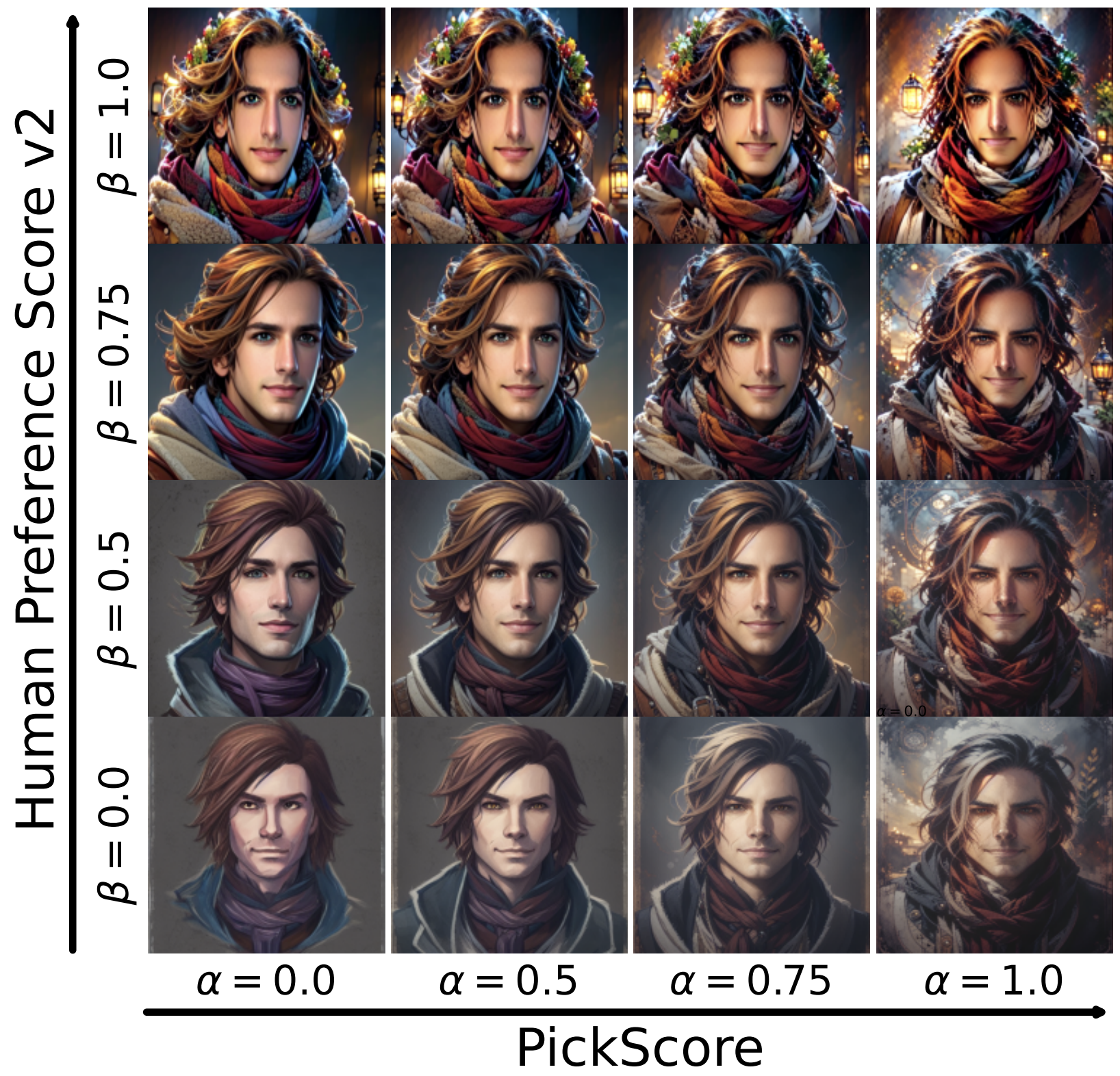
Abstract: We present Direct Reward Fine-Tuning (DRaFT), a simple and effective method for fine-tuning diffusion models to maximize differentiable reward functions, such as scores from human preference models. We first show that it is possible to backpropagate the reward function gradient through the full sampling procedure, and that doing so achieves strong performance on a variety of rewards, outperforming reinforcement learning-based approaches. We then propose more efficient variants of DRaFT: DRaFT-K, which truncates backpropagation to only the last K steps of sampling, and DRaFT-LV, which obtains lower-variance gradient estimates for the case when K=1. We show that our methods work well for a variety of reward functions and can be used to substantially improve the aesthetic quality of images generated by Stable Diffusion 1.4. Finally, we draw connections between our approach and prior work, providing a unifying perspective on the design space of gradient-based fine-tuning algorithms.
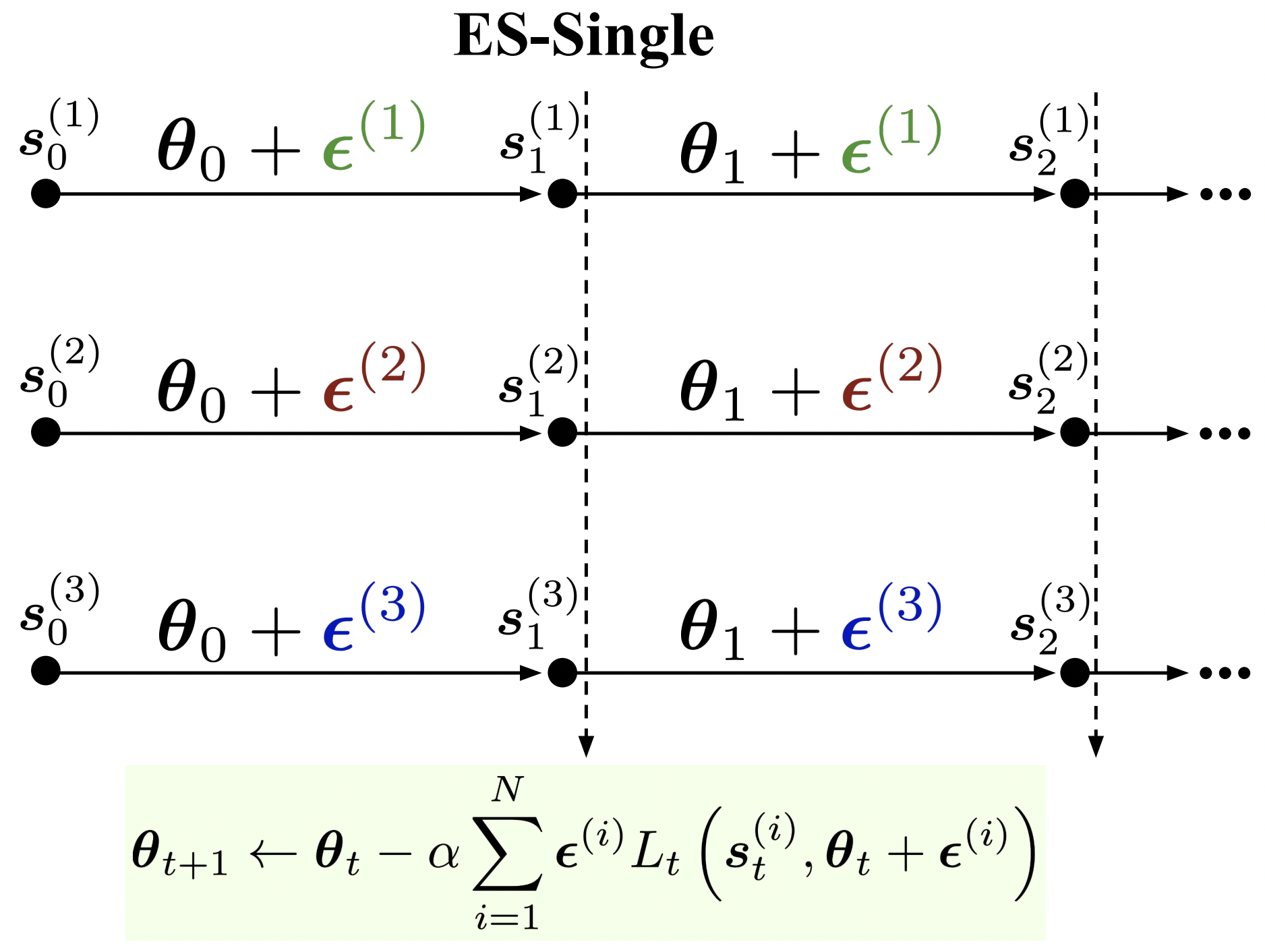
Abstract: We propose an evolution strategies-based algorithm for estimating gradients in unrolled computation graphs, called ES-Single. Similarly to the recently-proposed Persistent Evolution Strategies (PES), ES-Single is unbiased, and overcomes chaos arising from recursive function applications by smoothing the meta-loss landscape. ES-Single samples a single perturbation per particle, that is kept fixed over the course of an inner problem (e.g., perturbations are not re-sampled for each partial unroll). Compared to PES, ES-Single is simpler to implement and has lower variance: the variance of ES-Single is constant with respect to the number of truncated unrolls, removing a key barrier in applying ES to long inner problems using short truncations. We show that ES-Single is unbiased for quadratic inner problems, and demonstrate empirically that its variance can be substantially lower than that of PES. ES-Single consistently outperforms PES on a variety of tasks, including a synthetic benchmark task, hyperparameter optimization, training recurrent neural networks, and training learned optimizers.
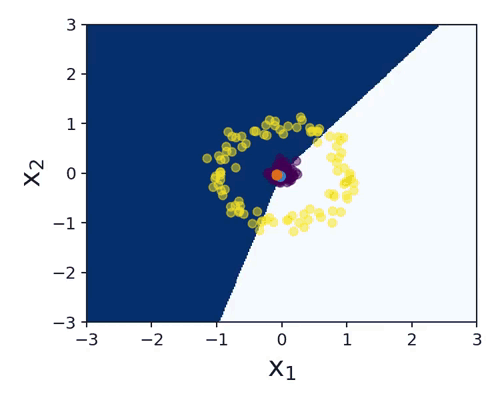
Abstract: Many problems in machine learning involve bilevel optimization (BLO), including hyperparameter optimization, meta-learning, and dataset distillation. Bilevel problems involve inner and outer parameters, each optimized for its own objective. Often, at least one of the two levels is underspecified and there are multiple ways to choose among equivalent optima. Inspired by recent studies of the implicit bias induced by optimization algorithms in single-level optimization, we investigate the implicit bias of different gradient-based algorithms for jointly optimizing the inner and outer parameters. We delineate two standard BLO methods—cold-start and warm-start BLO—and show that the converged solution or long-run behavior depends to a large degree on these and other algorithmic choices, such as the hypergradient approximation. We also show that the solutions from warm-start BLO can encode a surprising amount of information about the outer objective, even when the outer optimization variables are low-dimensional. We believe that implicit bias deserves as central a role in the study of bilevel optimization as it has attained in the study of single-level neural net optimization.
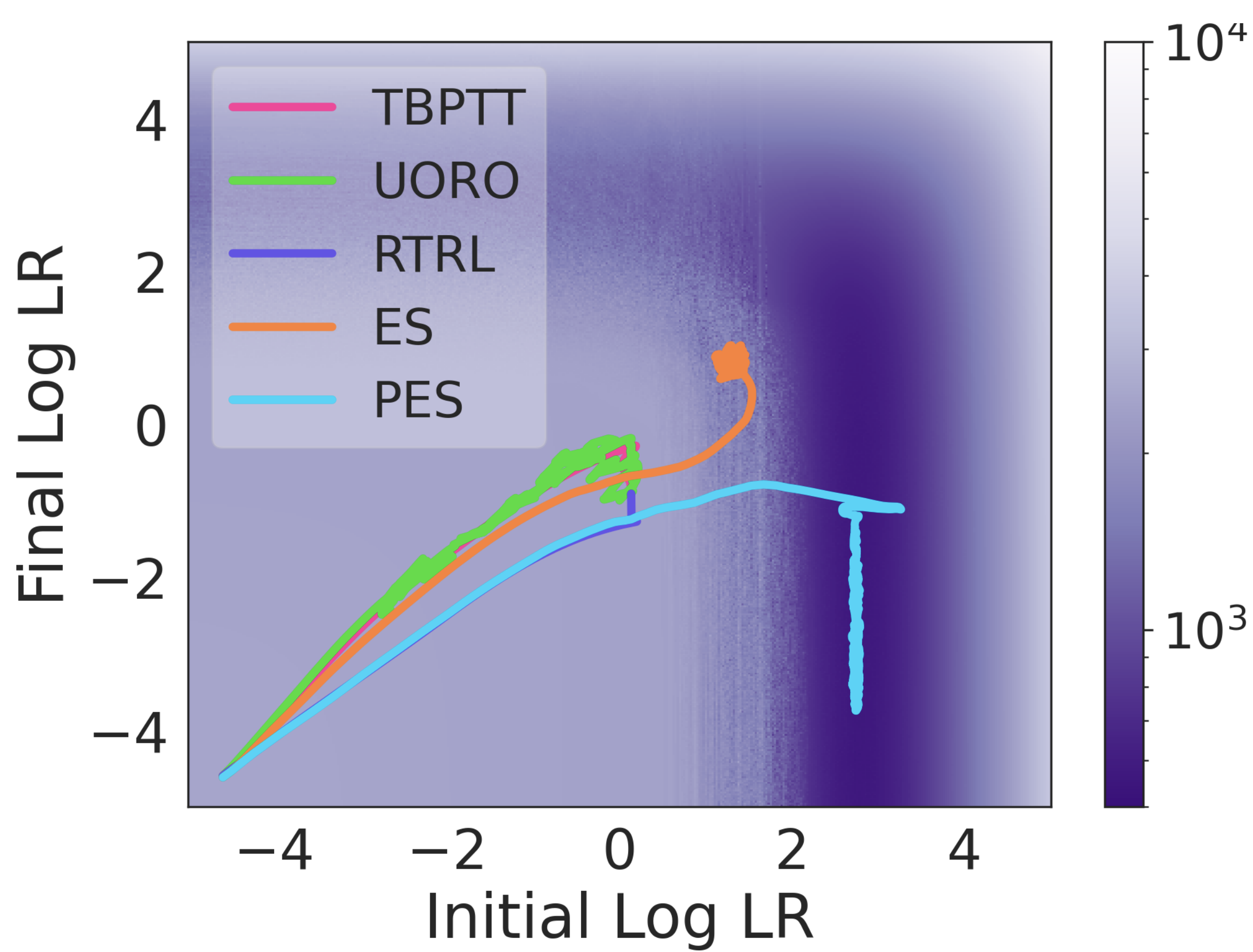
Abstract: Unrolled computation graphs arise in many scenarios, including training RNNs, tuning hyperparameters through unrolled optimization, and training learned optimizers. Current approaches to optimizing parameters in such computation graphs suffer from high variance gradients, bias, slow updates, or large memory usage. We introduce a method called Persistent Evolution Strategies (PES), which divides the computation graph into a series of truncated unrolls, and performs an evolution strategies-based update step after each unroll. PES eliminates bias from these truncations by accumulating correction terms over the entire sequence of unrolls. PES allows for rapid parameter updates, has low memory usage, is unbiased, and has reasonable variance characteristics. We experimentally demonstrate the advantages of PES compared to several other methods for gradient estimation on synthetic tasks, and show its applicability to training learned optimizers and tuning hyperparameters.
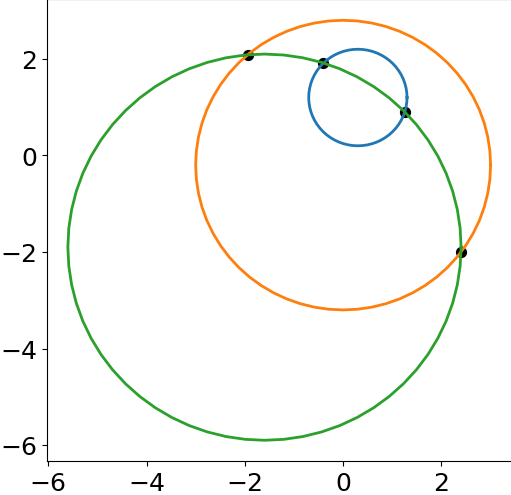
Abstract: Language models demonstrate both quantitative improvement and new qualitative capabilities with increasing scale. Despite their potentially transformative impact, these new capabilities are as yet poorly characterized. In order to inform future research, prepare for disruptive new model capabilities, and ameliorate socially harmful effects, it is vital that we understand the present and near-future capabilities and limitations of language models. To address this challenge, we introduce the Beyond the Imitation Game benchmark (BIG-bench). BIG-bench currently consists of 204 tasks, contributed by 442 authors across 132 institutions. Task topics are diverse, drawing problems from linguistics, childhood development, math, common-sense reasoning, biology, physics, social bias, software development, and beyond. BIG-bench focuses on tasks that are believed to be beyond the capabilities of current language models. We evaluate the behavior of OpenAI's GPT models, Google-internal dense transformer architectures, and Switch-style sparse transformers on BIG-bench, across model sizes spanning millions to hundreds of billions of parameters. In addition, a team of human expert raters performed all tasks in order to provide a strong baseline. Findings include: model performance and calibration both improve with scale, but are poor in absolute terms (and when compared with rater performance); performance is remarkably similar across model classes, though with benefits from sparsity; tasks that improve gradually and predictably commonly involve a large knowledge or memorization component, whereas tasks that exhibit "breakthrough" behavior at a critical scale often involve multiple steps or components, or brittle metrics; social bias typically increases with scale in settings with ambiguous context, but this can be improved with prompting.

Abstract: We propose a framework for online meta-optimization of parameters that govern optimization, called Amortized Proximal Optimization (APO). We first interpret various existing neural network optimizers as approximate stochastic proximal point methods which trade off the current-batch loss with proximity terms in both function space and weight space. The idea behind APO is to amortize the minimization of the proximal point objective by meta-learning the parameters of an update rule. We show how APO can be used to adapt a learning rate or a structured preconditioning matrix. Under appropriate assumptions, APO can recover existing optimizers such as natural gradient descent and KFAC. It enjoys low computational overhead and avoids expensive and numerically sensitive operations required by some second-order optimizers, such as matrix inverses. We empirically test APO for online adaptation of learning rates and structured preconditioning matrices for regression, image reconstruction, image classification, and natural language translation tasks. Empirically, the learning rate schedules found by APO generally outperform optimal fixed learning rates and are competitive with manually tuned decay schedules. Using APO to adapt a structured preconditioning matrix generally results in optimization performance competitive with second-order methods. Moreover, the absence of matrix inversion provides numerical stability, making it effective for low precision training.
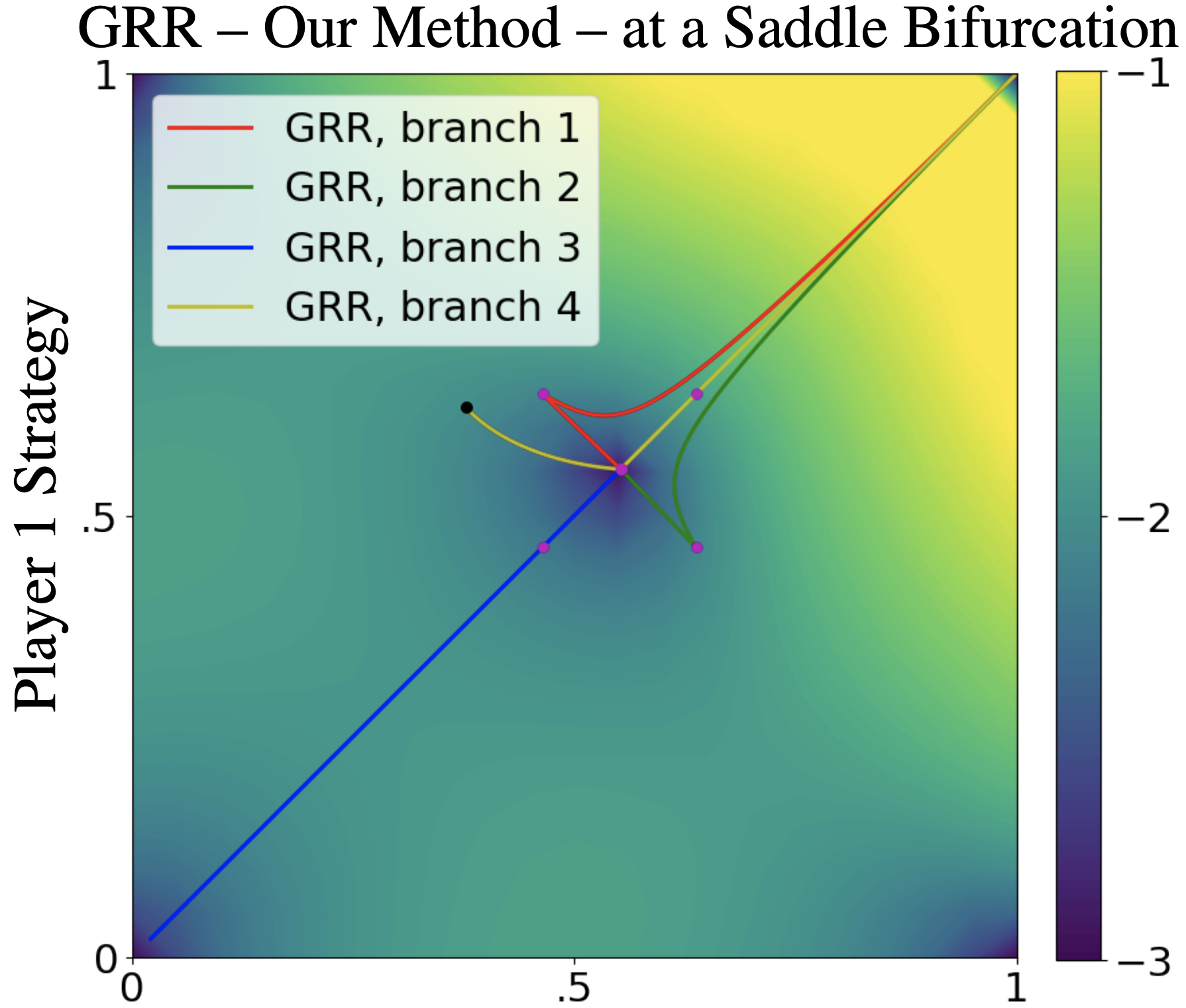
Abstract: Ridge Rider (RR) is an algorithm for finding diverse solutions to optimization problems by following eigenvectors of the Hessian (``ridges''). RR is designed for conservative gradient systems (i.e., settings involving a single loss function), where it branches at saddles --- easy-to-find bifurcation points. We generalize this idea to non-conservative, multi-agent gradient systems by proposing a method -- denoted Generalized Ridge Rider (GRR) -- for finding arbitrary bifurcation points. We give theoretical motivation for our method by leveraging machinery from the field of dynamical systems. We construct novel toy problems where we can visualize new phenomena while giving insight into high-dimensional problems of interest. Finally, we empirically evaluate our method by finding diverse solutions in the iterated prisoners' dilemma and relevant machine learning problems including generative adversarial networks.
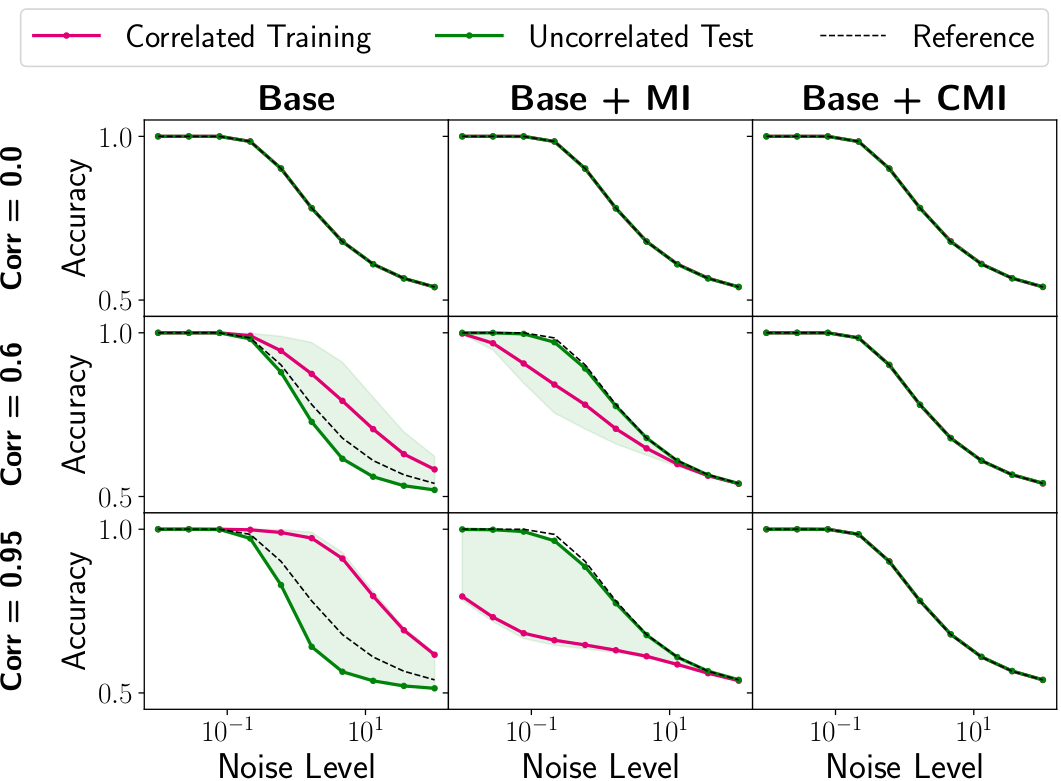
Abstract: Correlations between factors of variation are prevalent in real-world data. Machine learning algorithms may benefit from exploiting such correlations, as they can increase predictive performance on noisy data. However, often such correlations are not robust (e.g., they may change between domains, datasets, or applications) and we wish to avoid exploiting them. Disentanglement methods aim to learn representations which capture different factors of variation in latent subspaces. A common approach involves minimizing the mutual information between latent subspaces, such that each encodes a single underlying attribute. However, this fails when attributes are correlated. We solve this problem by enforcing independence between subspaces conditioned on the available attributes, which allows us to remove only dependencies that are not due to the correlation structure present in the training data. We achieve this via an adversarial approach to minimize the conditional mutual information (CMI) between subspaces with respect to categorical variables. We first show theoretically that CMI minimization is a good objective for robust disentanglement on linear problems with Gaussian data. We then apply our method on real-world datasets based on MNIST and CelebA, and show that it yields models that are disentangled and robust under correlation shift, including in weakly supervised settings.
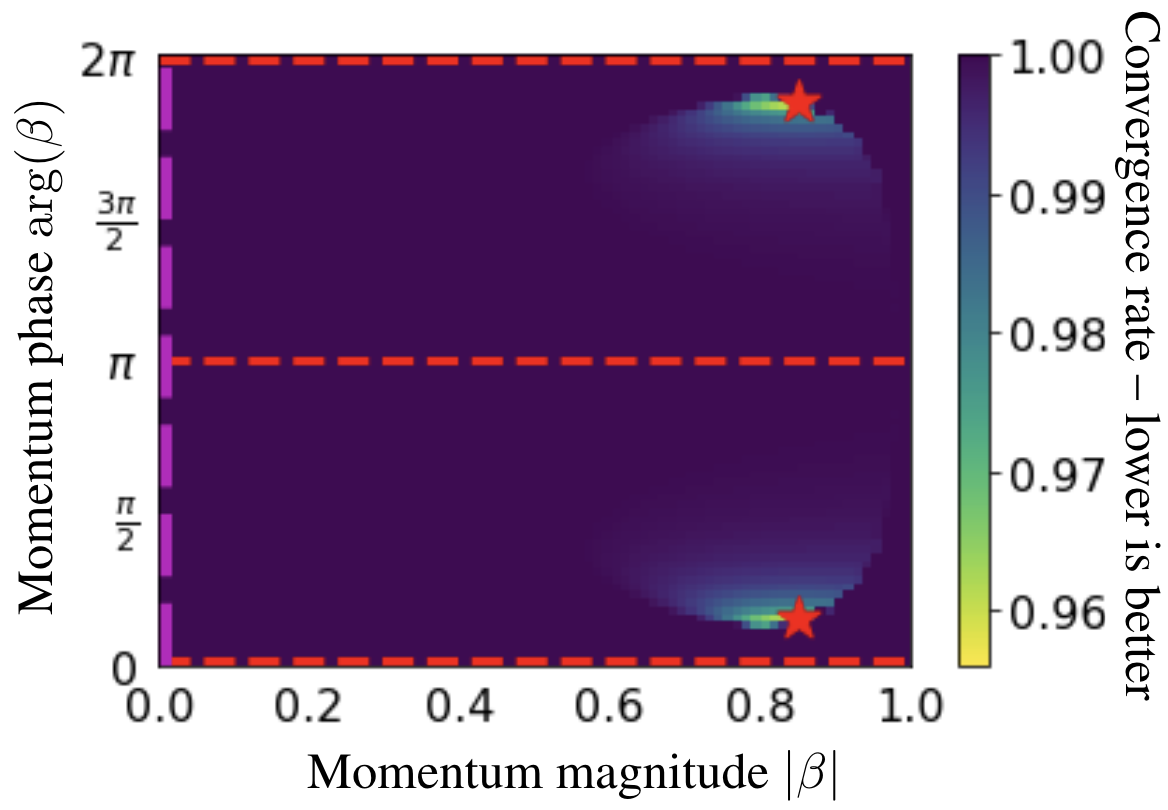
Abstract: We generalize gradient descent with momentum for learning in differentiable games to have complex-valued momentum. We give theoretical motivation for our method by proving convergence on bilinear zero-sum games for simultaneous and alternating updates. Our method gives real-valued parameter updates, making it a drop-in replacement for standard optimizers. We empirically demonstrate that complex-valued momentum can improve convergence in adversarial games---like generative adversarial networks---by showing we can find better solutions with an almost identical computational cost. We also show a practical generalization to a complex-valued Adam variant, which we use to train BigGAN to better inception scores on CIFAR-10.
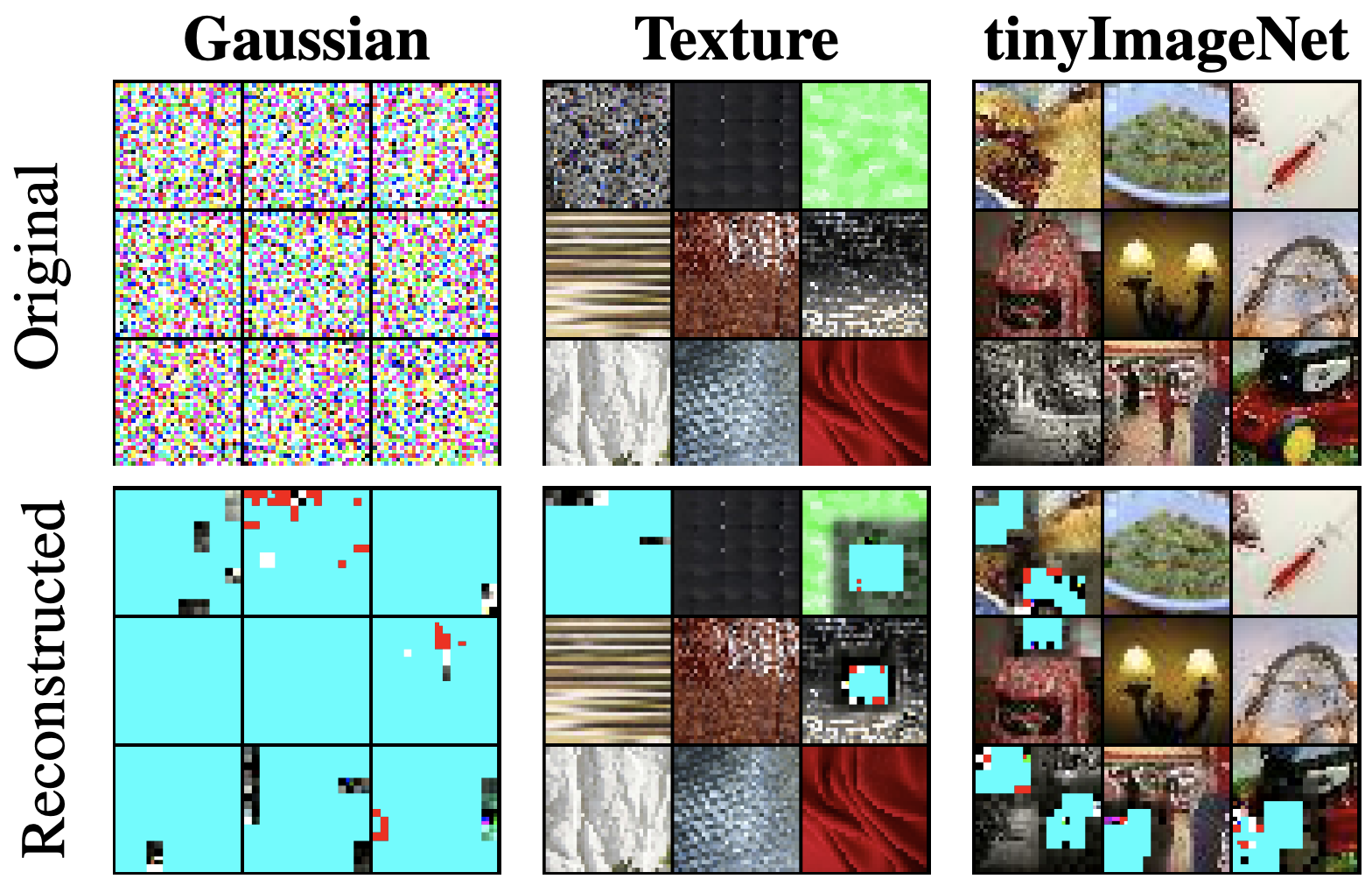
Abstract: Invertible neural networks (INNs) have been used to design generative models, implement memory-saving gradient computation, and solve inverse problems. In this work, we show that commonly-used INN architectures suffer from exploding inverses and are thus prone to becoming numerically non-invertible. Across a wide range of INN use-cases, we reveal failures including the non-applicability of the change-of-variables formula on in- and out-of-distribution (OOD) data, incorrect gradients for memory-saving backprop, and the inability to sample from normalizing flow models. We further derive bi-Lipschitz properties of atomic building blocks of common architectures. These insights into the stability of INNs then provide ways forward to remedy these failures. For tasks where local invertibility is sufficient, like memory-saving backprop, we propose a flexible and efficient regularizer. For problems where global invertibility is necessary, such as applying normalizing flows on OOD data, we show the importance of designing stable INN building blocks.
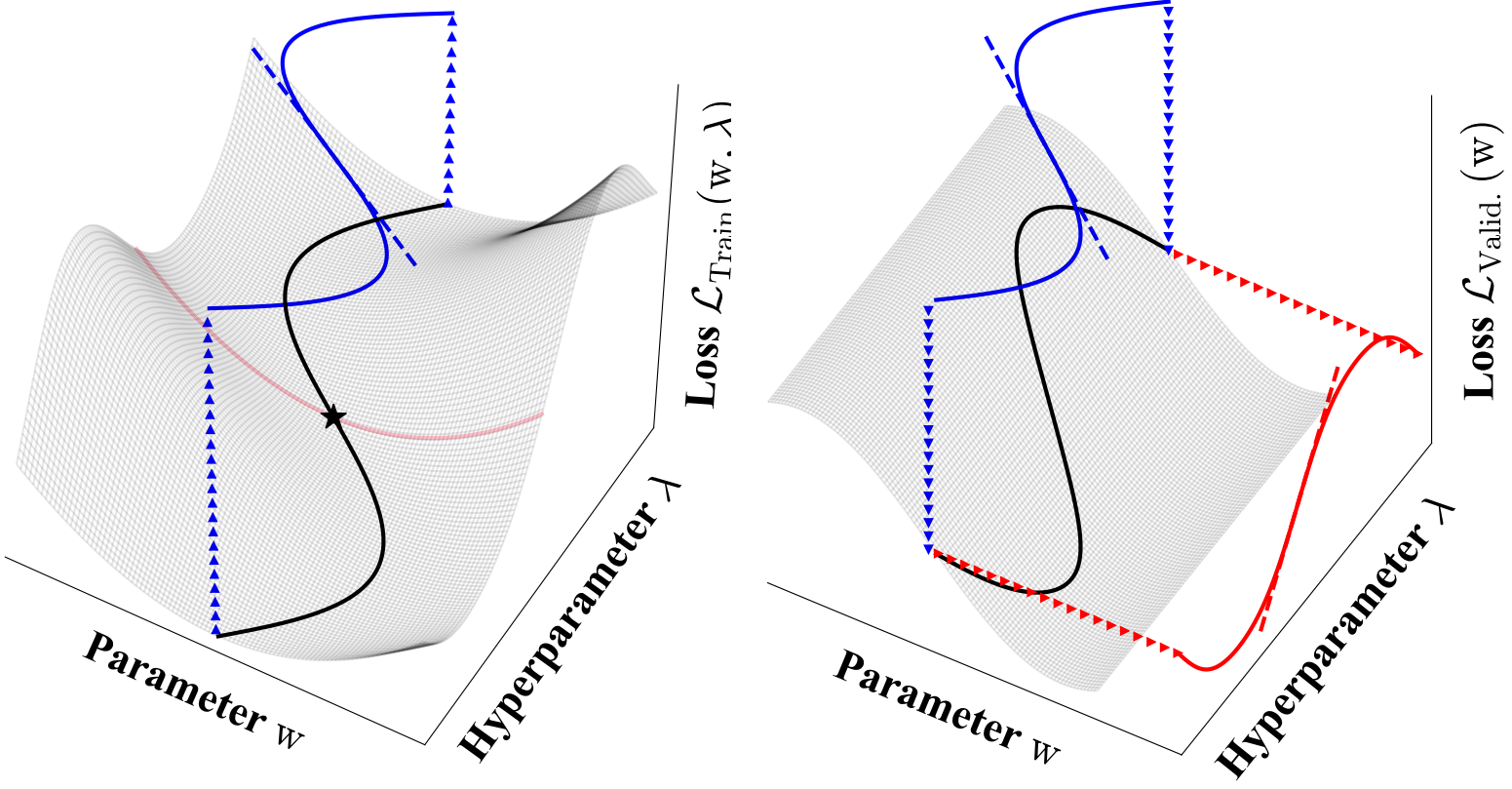
Abstract: We propose an algorithm for inexpensive gradient-based hyperparameter optimization that combines the implicit function theorem (IFT) with efficient inverse Hessian approximations. We present results on the relationship between the IFT and differentiating through optimization, motivating our algorithm. We use the proposed approach to train modern network architectures with millions of weights and millions of hyperparameters. We learn a data-augmentation network---where every weight is a hyperparameter tuned for validation performance---that outputs augmented training examples; we learn a distilled dataset where each feature in each datapoint is a hyperparameter; and we tune millions of regularization hyperparameters. Jointly tuning weights and hyperparameters with our approach is only a few times more costly in memory and compute than standard training.
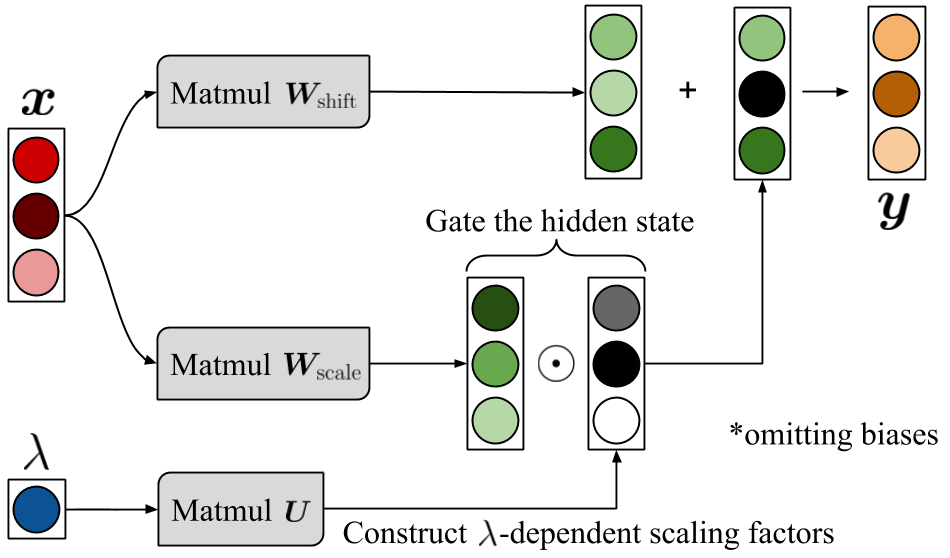
Abstract: Hyperparameter optimization can be formulated as a bilevel optimization problem, where the optimal parameters on the training set depend on the hyperparameters. We aim to adapt regularization hyperparameters for neural networks by fitting compact approximations to the best-response function, which maps hyperparameters to optimal weights and biases. We show how to construct scalable best-response approximations for neural networks by modeling the best-response as a single network whose hidden units are gated conditionally on the regularizer. We justify this approximation by showing the exact best-response for a shallow linear network with L2-regularized Jacobian can be represented by a similar gating mechanism. We fit this model using a gradient-based hyperparameter optimization algorithm which alternates between approximating the best-response around the current hyperparameters and optimizing the hyperparameters using the approximate best-response function. Unlike other gradient-based approaches, we do not require differentiating the training loss with respect to the hyperparameters, allowing us to tune discrete hyperparameters, data augmentation hyperparameters, and dropout probabilities. Because the hyperparameters are adapted online, our approach discovers hyperparameter schedules that can outperform fixed hyperparameter values. Empirically, our approach outperforms competing hyperparameter optimization methods on large-scale deep learning problems. We call our networks, which update their own hyperparameters online during training, Self-Tuning Networks (STNs).
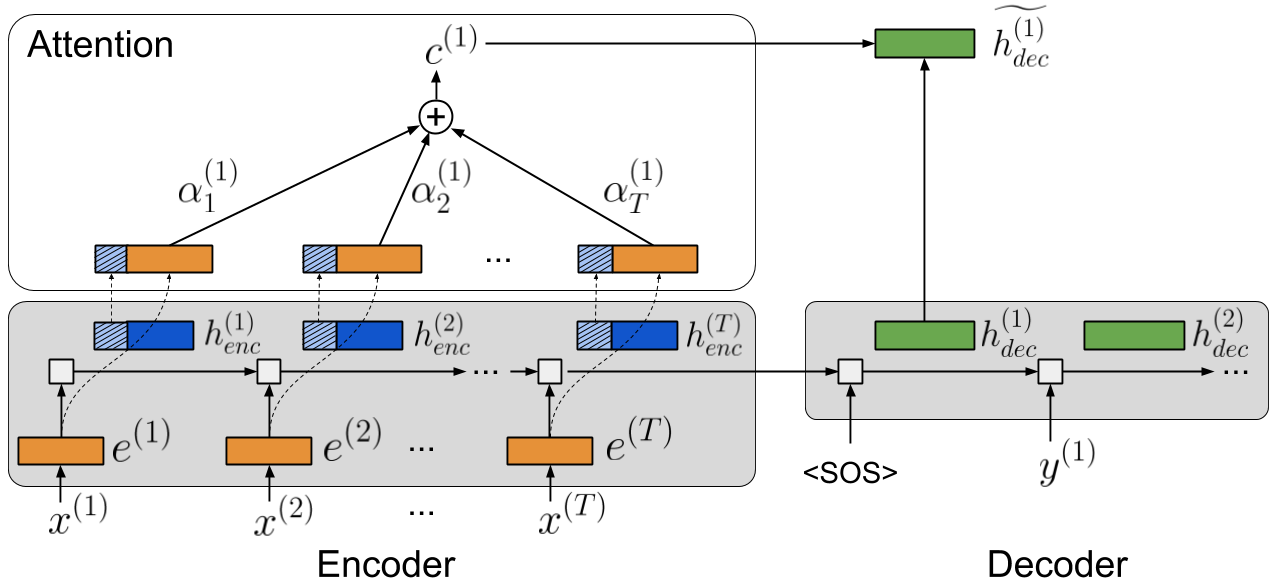
Abstract: Recurrent neural networks (RNNs) provide state-of-the-art performance in processing sequential data but are memory intensive to train, limiting the flexibility of RNN models which can be trained. Reversible RNNs---RNNs for which the hidden-to-hidden transition can be reversed---offer a path to reduce the memory requirements of training, as hidden states need not be stored and instead can be recomputed during backpropagation. We first show that perfectly reversible RNNs, which require no storage of the hidden activations, are fundamentally limited because they cannot forget information from their hidden state. We then provide a scheme for storing a small number of bits in order to allow perfect reversal with forgetting. Our method achieves comparable performance to traditional models while reducing the activation memory cost by a factor of 10--15. We extend our technique to attention-based sequence-to-sequence models, where it maintains performance while reducing activation memory cost by a factor of 5--10 in the encoder, and a factor of 10--15 in the decoder.
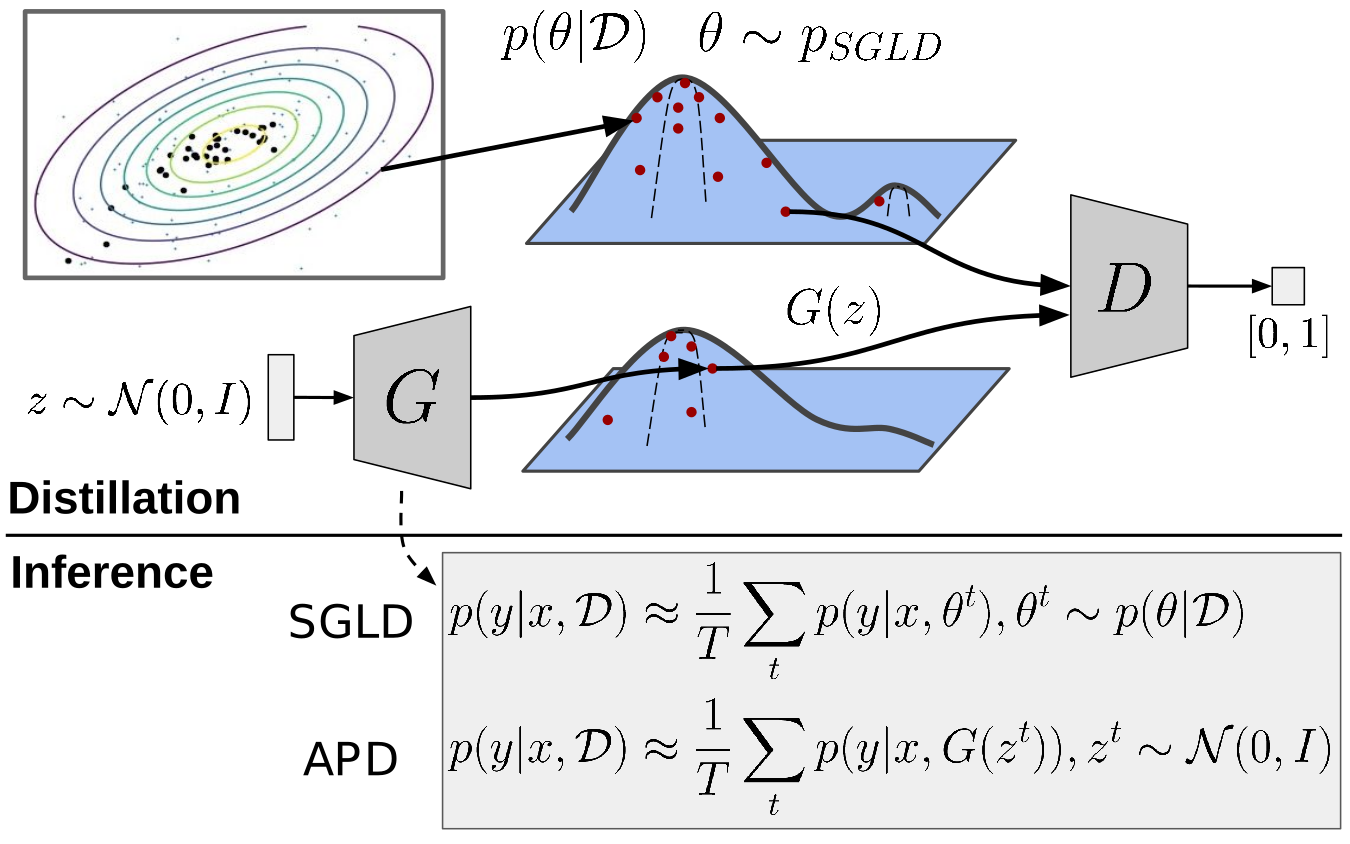
Abstract: Bayesian neural networks (BNNs) allow us to reason about uncertainty in a principled way. Stochastic Gradient Langevin Dynamics (SGLD) enables efficient BNN learning by drawing samples from the BNN posterior using mini-batches. However, SGLD and its extensions require storage of many copies of the model parameters, a potentially prohibitive cost, especially for large neural networks. We propose a framework, Adversarial Posterior Distillation, to distill the SGLD samples using a Generative Adversarial Network (GAN). At test-time, samples are generated by the GAN. We show that this distillation framework incurs no loss in performance on recent BNN applications including anomaly detection, active learning, and defense against adversarial attacks. By construction, our framework distills not only the Bayesian predictive distribution, but the posterior itself. This allows one to compute quantities such as the approximate model variance, which is useful in downstream tasks. To our knowledge, these are the first results applying MCMC-based BNNs to the aforementioned applications.
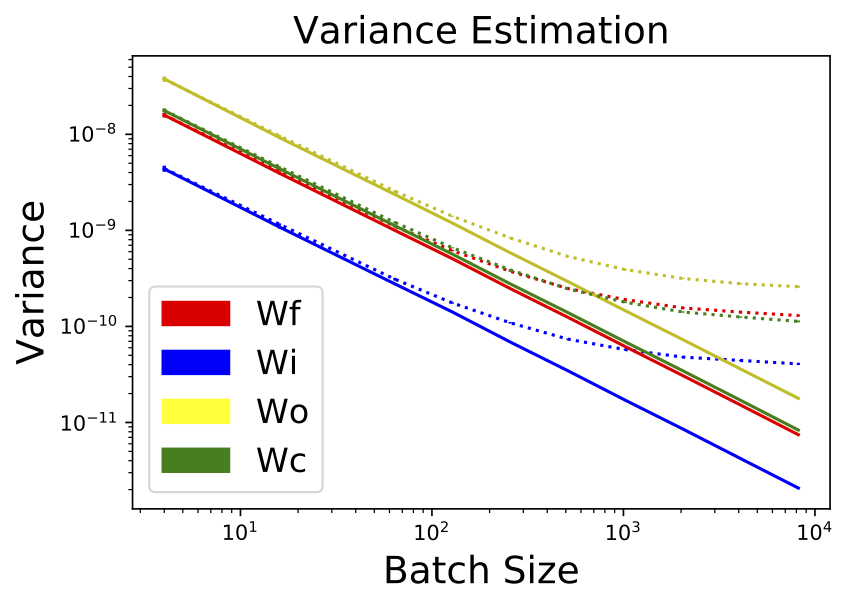
Abstract: Stochastic neural net weights are used in a variety of contexts, including regularization, Bayesian neural nets, exploration in reinforcement learning, and evolution strategies. Unfortunately, due to the large number of weights, all the examples in a mini-batch typically share the same weight perturbation, thereby limiting the variance reduction effect of large mini-batches. We introduce flipout, an efficient method for decorrelating the gradients within a mini-batch by implicitly sampling pseudo-independent weight perturbations for each example. Empirically, flipout achieves the ideal linear variance reduction for fully connected networks, convolutional networks, and RNNs. We find significant speedups in training neural networks with multiplicative Gaussian perturbations. We show that flipout is effective at regularizing LSTMs, and outperforms previous methods. Flipout also enables us to vectorize evolution strategies: in our experiments, a single GPU with flipout can handle the same throughput as at least 40 CPU cores using existing methods, equivalent to a factor-of-4 cost reduction on Amazon Web Services.
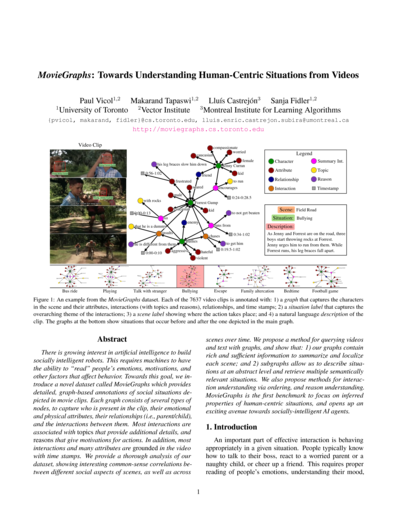
Abstract: There is growing interest in artificial intelligence to build socially intelligent robots. This requires machines to have the ability to "read" people's emotions, motivations, and other factors that affect behavior. Towards this goal, we introduce a novel dataset called MovieGraphs which provides detailed graph-based annotations of social situations de- picted in movie clips. Each graph consists of several types of nodes, to capture who is present in the clip, their emotional and physical attributes, their relationships (i.e., parent/child), and the interactions between them. Most interactions are associated with topics that provide additional details, and reasons that give motivations for actions. In addition, most interactions and many attributes are grounded in the video with time stamps. We provide a thorough analysis of our dataset, showing interesting common-sense correlations between different social aspects of scenes, as well as across scenes over time. We propose a method for querying videos and text with graphs, and show that: 1) our graphs contain rich and sufficient information to summarize and localize each scene; and 2) subgraphs allow us to describe situations at an abstract level and retrieve multiple semantically relevant situations. We also propose methods for interaction understanding via ordering, and reasoning about the social scene. MovieGraphs is the first benchmark to focus on inferred properties of human-centric situations, and opens up an exciting avenue towards socially-intelligent AI agents.
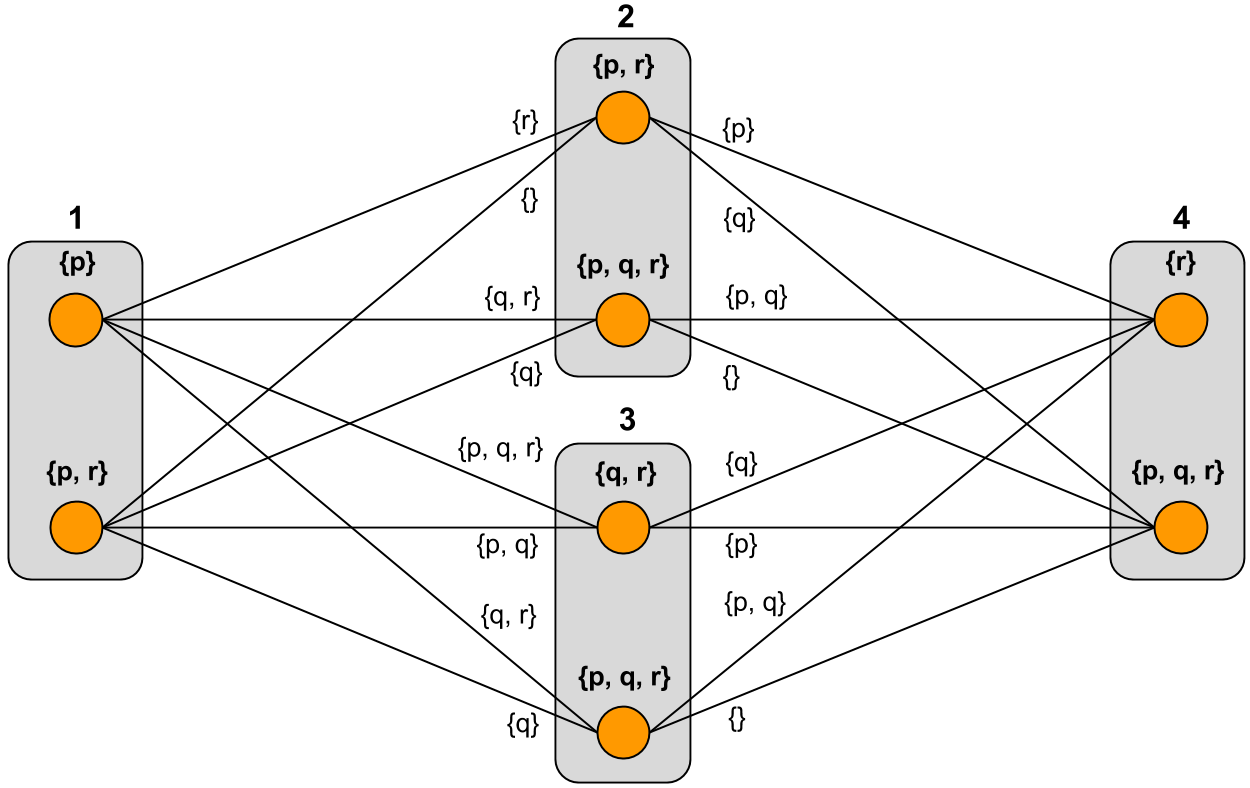
Abstract: We investigate minimization-based approaches to iterated belief change in multi-agent systems. A network of agents is represented by an undirected graph, where propositional formulas are associated with vertices. Information is shared between vertices via a procedure where each vertex minimizes disagreement with other vertices in the graph. Each iterative approach takes into account the proximity between vertices, with the underlying assumption that information from nearby sources is given higher priority than information from more distant sources. We have identified two main approaches to iteration: in the first approach, a vertex takes into account the information at its immediate neighbours only, and information from more distant vertices is propagated via iteration; in the second approach, a vertex first takes into account information from distance-1 neighbours, then from distance-2 neighbours, and so on, in a prioritized fashion. There prove to be three distinct ways to define the second approach, so in total we have four types of iteration. We define these types formally, find relationships between them, and investigate their basic logical properties. We also implemented the approaches in a software system called Equibel.
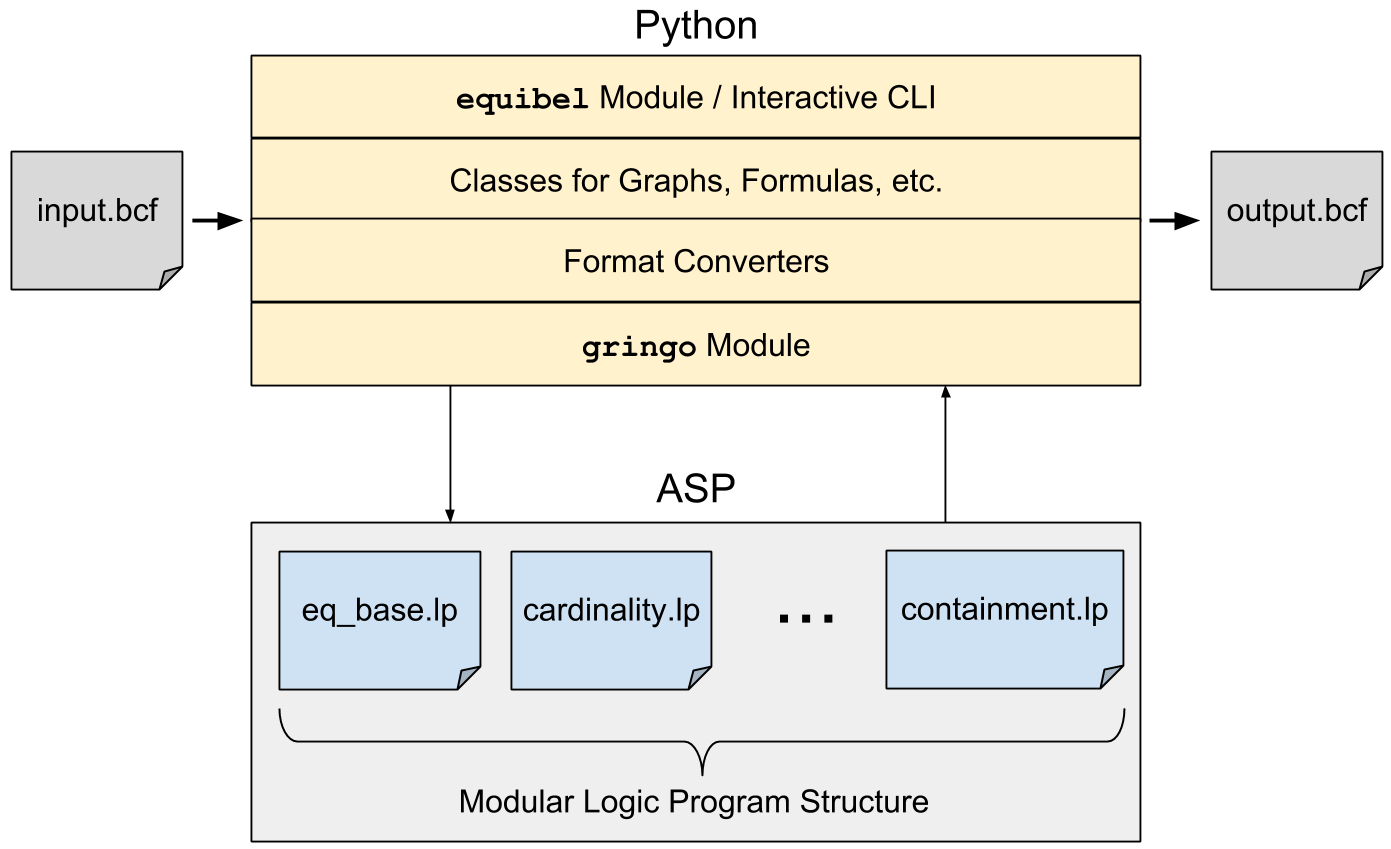
Abstract: This paper presents an implementation of a general framework for consistency-based belief change using Answer Set Programming (ASP). We describe Equibel, a software system for working with belief change operations on arbitrary graph topologies. The system has an ASP component that performs a core maximization procedure, and a Python component that performs additional processing on the output of the ASP solver. The Python component also provides an interactive interface that allows users to create a graph, set formulas at nodes, perform belief change operations, and query the resulting graph.
Working on Gemini Thinking Models.
Worked on Deep Equilibrium Models.
Worked on extending PES.
Worked on Persistent Evolution Strategies (PES).